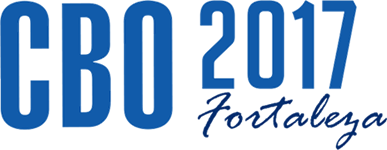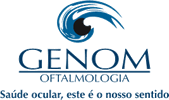
Sessão de Encontro com o Autor – Tema Livre
Código
TL008
Área Técnica
Glaucoma
Instituição onde foi realizado o trabalho
- Principal: Universidade Federal de São Paulo (UNIFESP)
- Secundaria: University of California San Diego
Autores
- FABIO BERNARDI DAGA (Interesse Comercial: NÃO)
- Masaki Nakanishi (Interesse Comercial: NÃO)
- Yu-Te Wang (Interesse Comercial: NÃO)
- Tzyy-Ping Jung (Interesse Comercial: SIM)
- John K Zao (Interesse Comercial: SIM)
- Ivan Maynart Tavares (Interesse Comercial: NÃO)
- Felipe A Medeiros (Interesse Comercial: SIM)
Título
COMPARISON BETWEEN THE NGOGGLE AND OPTICAL COHERENCE TOMOGRAPHY FOR DETECTING GLAUCOMA
Objetivo
The nGoggle (nGoggle, Inc., San Diego, CA) is a portable device capable of objectively assess visual function loss through multifocal steady-state visual evoked potentials (mfSSVEP) associated with visual field stimulation. In a previous study, the nGoggle has been shown to be able to identify functional losses in eyes with glaucomatous visual field defects on standard automated perimetry (SAP). In this study we further investigate the ability of the nGoggle in detecting glaucomatous damage, by comparing its diagnostic accuracy to that of RNFL thickness measurements obtained with Spectral-Domain Optical Coherence Tomography (SDOCT).
Método
80 eyes of 42 glaucomatous patients and 33 eyes of 18 healthy controls were included. Glaucoma was diagnosed based on masked grading of optic disc stereophotographs. The nGoggle integrates wearable, wireless, dry electroencephalogram and electrooculogram systems, and a head-mounted display (HMD). Visual stimuli eliciting mfSSVEP signals in 20 sectors over the field of vision were presented on the nGoggle’s cell phone-based HMD. The area under the receiver operating characteristic curve (AUC) was used to compare the diagnostic accuracies of the different parameters investigated in the study.
Resultado
Average SAP MD was -4.2±6.3 dB in glaucoma eyes vs. -0.9±2.8 dB in controls (P=0.002). Average RNFL thickness measurements were thinner in glaucoma compared to healthy eyes (74.0 15.4 μm vs. 93.2 12.3 μm, respectively; P<0.001). The global nGoggle mfSSVEP parameter also showed a significant difference between glaucoma and healthy eyes (0.294 0.021 vs. 0.335 0.028, P<0.001). The nGoggle global parameter had AUC of 0.879 (95% CI: 0.817 – 0.941), which was comparable to the AUC for SDOCT RNFL (0.831; 95% CI: 0.753 – 0.908; P=0.340). The nGoggle performed better than SAP MD (AUC=0.684; P=0.002) and Pattern Standard Deviation (AUC=0.667; P<0.001).
Conclusão
The nGoggle performed better than SAP and had diagnostic accuracy comparable to OCT for detecting glaucomatous damage.












